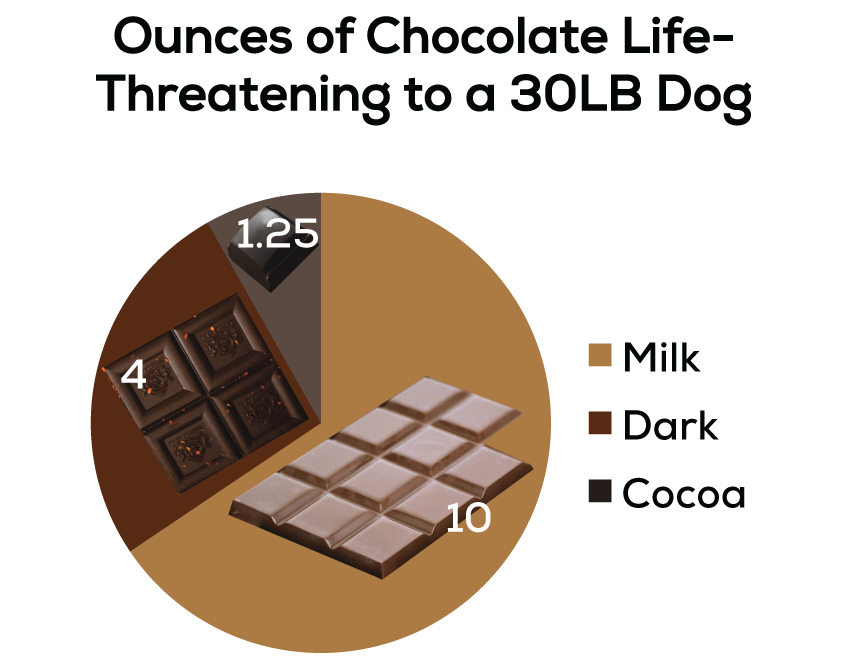All About Chocolate Toxicity in Dogs

Your Questions About Chocolate Answered
Around the holidays, we receive questions from many clients about chocolate toxicity in dogs.
- Why is chocolate bad for dogs?
- How much chocolate is dangerous?
You may have even heard anecdotes from people such as, “Once my dog ate an entire bag of Oreos, and he was fine,” which raises even more questions.
We talked with Dr. Jurgens here at Grady Veterinary Hospital, and she gave us some definitive answers.
Theobromine Causes Chocolate Toxicity in Dogs
The substance theobromine can’t be metabolized by dogs, and it’s found in chocolate. Also, the caffeine in chocolate is dangerous. Theobromine is a bitter alkaloid that is related to caffeine, and “It has an effect similar to, but lesser than that of caffeine in the human nervous system.”
If a client brings their dog in with suspected chocolate ingestion, we ask three questions.
Chocolate Toxicity in Dogs: How Much Chocolate?
As much as possible, it’s important to know how much chocolate the dog may have eaten. Giving a measurement in ounces is best for treatment. This amount can get complicated to calculate, for instance, if a dog ate a portion of chocolate cake from a bakery. But estimation is the first important step.
Chocolate Toxicity in Dogs: What Size is the Dog?
This is much easier to determine. We weigh the dog. Body weight is an important indicator of how much chocolate a dog can ingest before sustaining life-threatening symptoms.
Chocolate Toxicity in Dogs: What Type of Chocolate?
Different types of chocolate contain different amounts of theobromine. Milk chocolate contains the least per ounce, while dark chocolate contains more, and cocoa (or baker’s chocolate) contains the most.

Hypothetically, a 30-pound dog would show life-threatening clinical signs after consuming:
- 10 ounces of milk chocolate
- 4 ounces of dark chocolate
- 1.25 ounces of cocoa or baker’s chocolate
Chocolate Toxicity in Dogs: Decontamination and Treatment
Once the dog has been examined by a veterinarian, the first step in treatment is to make the dog vomit. However, chocolate forms into a lump in the stomach, and vomiting only empties about 80% of the stomach contents. The next step is to administer activated charcoal, which binds to the chocolate and prevents the body from absorbing water.
With a more serious case of chocolate toxicity in dogs, we recommend hospitalization, for three reasons.
- We give repeated doses of activated charcoal. As chocolate circulates through the body, it goes through the liver and back into the digestive system. Repeated doses of activated charcoal help prevent the recirculation and absorption.
- We also place the dog on IV fluids to flush toxicities through the system faster. Fluids dilute the urine and help prevent theobromine from being absorbed through the bladder wall back into the system.
- We monitor for the onset of moderate to severe clinical signs like hyperactivity, muscle tremors, high heart rate, high body temperature, cardiac arrhythmia and seizures.
Within 24-48 hours, a dog that has been properly treated and monitored is usually recovered.
Watch the Video: Chocolate Toxicity in Dogs
Watch the Video: Chocolate Toxicity in Dogs
Please remember to keep all of chocolate out of reach of your pet. If you suspect your dog has eaten chocolate, contact us immediately.

